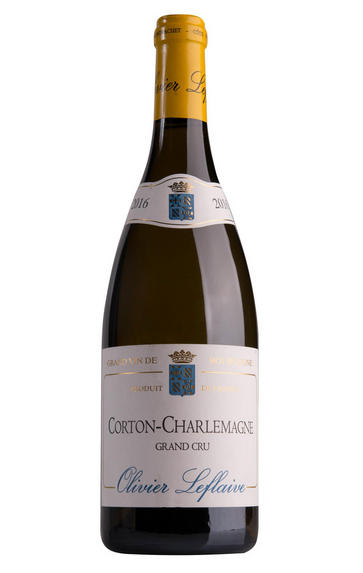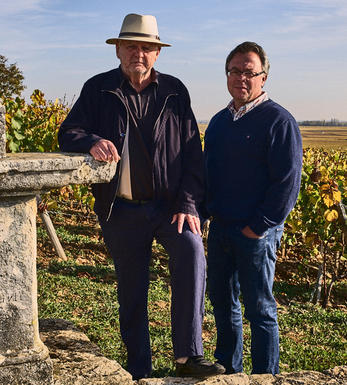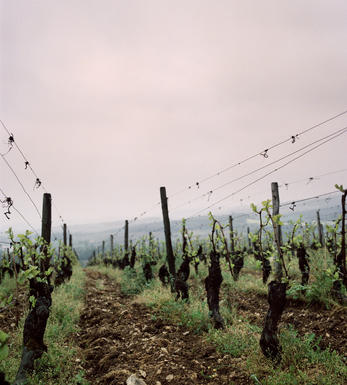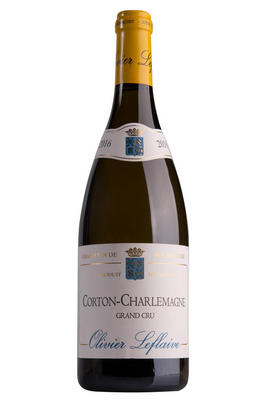
About this WINE

Olivier Leflaive
Olivier Leflaive studied at business school before heading to Paris, where he lived a rather bohemian life in the 1970s. He returned to Burgundy in ’81 to manage Domaine Leflaive with his uncle Vincent and, later, his cousin Anne-Claude.
He set up his own négociant business in ’84, leaving the family domaine a decade later; he gave 15 years’ notice that he would take back his share of the vines.
Winemaker Franck Grux now makes 85-90 different cuvées, vinifying the equivalent of 120 hectares – 17 of which are estate-owned. The focus is on elegance and finesse over power.

Corton-Charlemagne
There are two specific Charlemagne vineyards, En Charlemagne and Le Charlemagne, making up half the Corton-Charlemagne appellation, while white grapes grown in seven other vineyards (see list below) may also be sold as Corton-Charlemagne. As a result there can be a wide divergence in style between a south-facing location such as Pougets, which needs picking right at the start of the harvest, and the western slopes in Pernand-Vergelesses which might be picked several weeks later. The underlying similarity though comes from the minerality of the soil.
En Charlemagne lies at the border with Aloxe-Corton. The hillside faces west and fine, racy white wines can be made, but the Grand Cru appellation has been extended right up to the village of Pernand itself, by which time the exposition is north-west and the valley has become noticeably more enclosed. The final sector was only promoted in 1966, and probably should not have been.
Le Charlemagne is the absolute heartland of the appellation, facing south-west, thus avoiding the risk of over-ripeness which can afflict the vines exposed due south. If I had Corton-Charlemagne vines here I would be tempted to let the world know by labelling the wine as Corton-Charlemagne, Le Charlemagne.
Two producers to my knowledge also have some Pinot Noir planted here – Follin-Arbelet and Bonneau du Martray. Both make attractive wines but neither, to my mind, justifies Grand Cru status for red wine, lacking the extra dimensions of flavour one hopes for at the highest level. This is not the producers’ fault, but a reflection of the terroir.

Chardonnay
Chardonnay is often seen as the king of white wine grapes and one of the most widely planted in the world It is suited to a wide variety of soils, though it excels in soils with a high limestone content as found in Champagne, Chablis, and the Côte D`Or.
Burgundy is Chardonnay's spiritual home and the best White Burgundies are dry, rich, honeyed wines with marvellous poise, elegance and balance. They are unquestionably the finest dry white wines in the world. Chardonnay plays a crucial role in the Champagne blend, providing structure and finesse, and is the sole grape in Blanc de Blancs.
It is quantitatively important in California and Australia, is widely planted in Chile and South Africa, and is the second most widely planted grape in New Zealand. In warm climates Chardonnay has a tendency to develop very high sugar levels during the final stages of ripening and this can occur at the expense of acidity. Late picking is a common problem and can result in blowsy and flabby wines that lack structure and definition.
Recently in the New World, we have seen a move towards more elegant, better- balanced and less oak-driven Chardonnays, and this is to be welcomed.



Buying options
Add to wishlist
Description
The grapes for this are purchased, from parcels facing Aloxe-Corton, Ladoix and Pernand-Vergelesses, which gives a complete reading of the terroir of the vineyard. The nose has notes of stone fruit, a little pineapple and just a whiff of bacon fat. The palate is rich and dense with a warming ripeness, but all the while underpinned by a citrus core of acidity. An excellent Corton-Charlemagne. Drink 2022-2028.
Adam Bruntlett, Burgundy Buyer
After studying at business school, Olivier Leflaive headed to Paris to live a rather bohemian life during the 1970s, working in music and television. He returned to Burgundy in 1981 to manage Domaine Leflaive with his uncle Vincent and later his cousin Anne-Claude. Having long-aspired to work for himself, he set up his own négociant business in 1984 and, upon leaving the family domaine a decade later, he gave 15 years’ notice that he would take back his share of the family vines from 2009. Experienced winemaker Franck Grux now makes between 85 and 90 different cuvées, vinifying the equivalent of 120 hectares, of which 17 are estate. The focus here is on elegance and finesse over power. Winemaker Franck Grux is very pleased with the quality of the 2016 vintage, although he explained that the frost damage caused grapes to ripen at different times, which required a great deal of patience and necessitated extending the harvest to three weeks, as opposed to the normal two. The Puligny vineyards were relatively lucky in terms of frost damage, giving good yields. Franck explained that he carried out more lees stirring in 2016 than in 2015 to give the wines more weight, feeling that 2016 is a vintage with comparatively modest body and ripeness. Unless otherwise stated, all wines are domaine.
wine at a glance
Delivery and quality guarantee